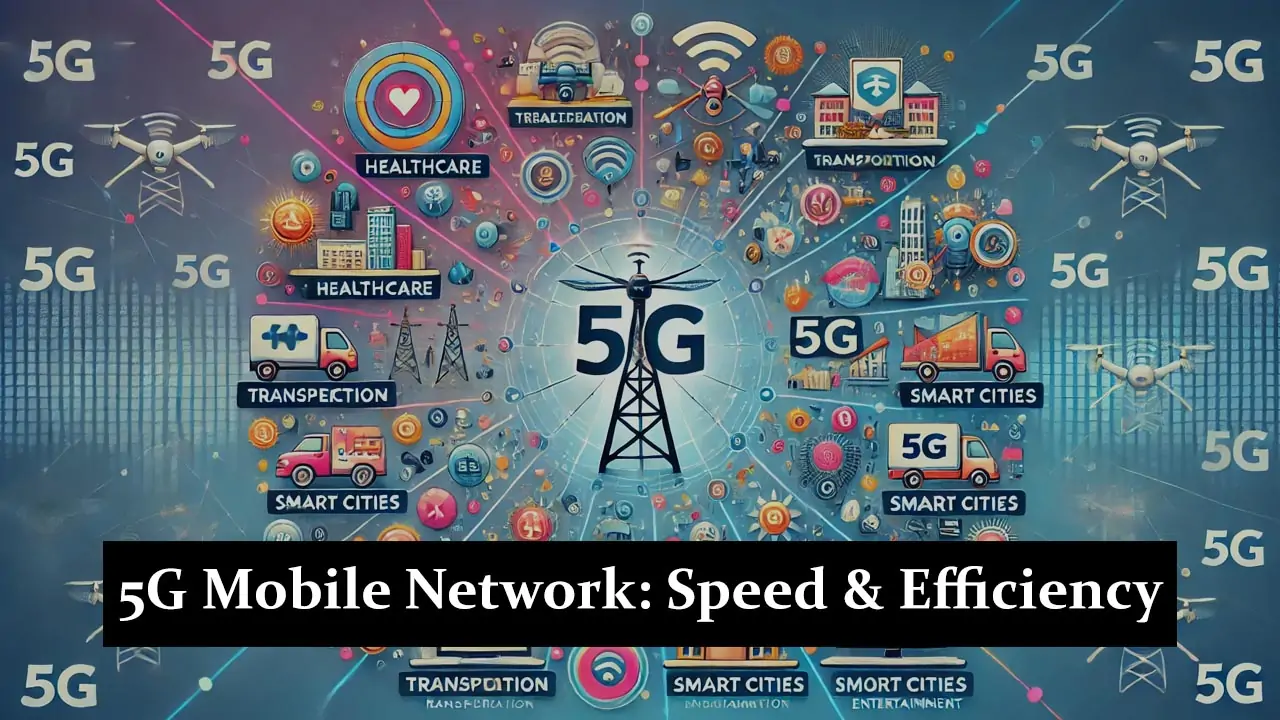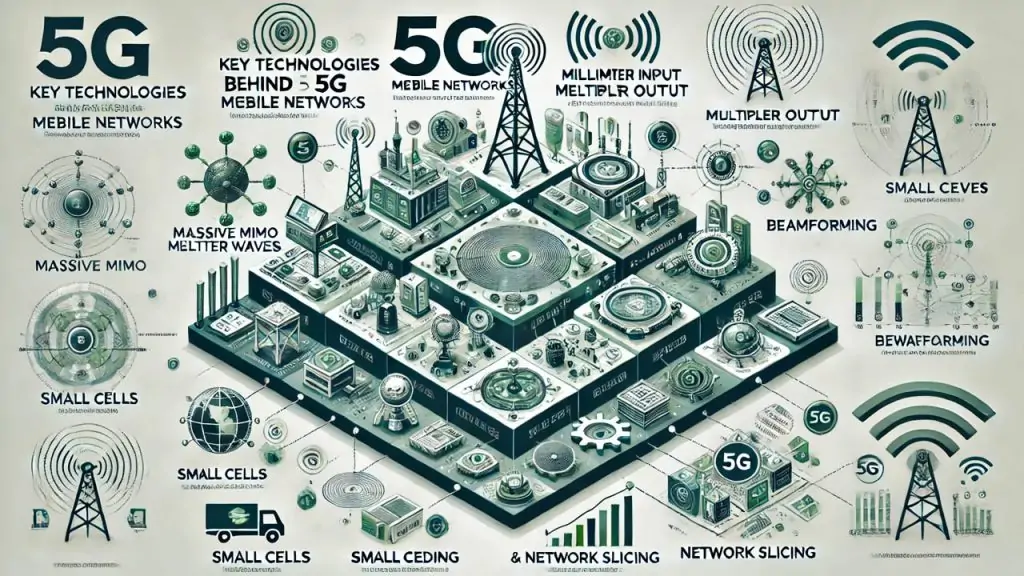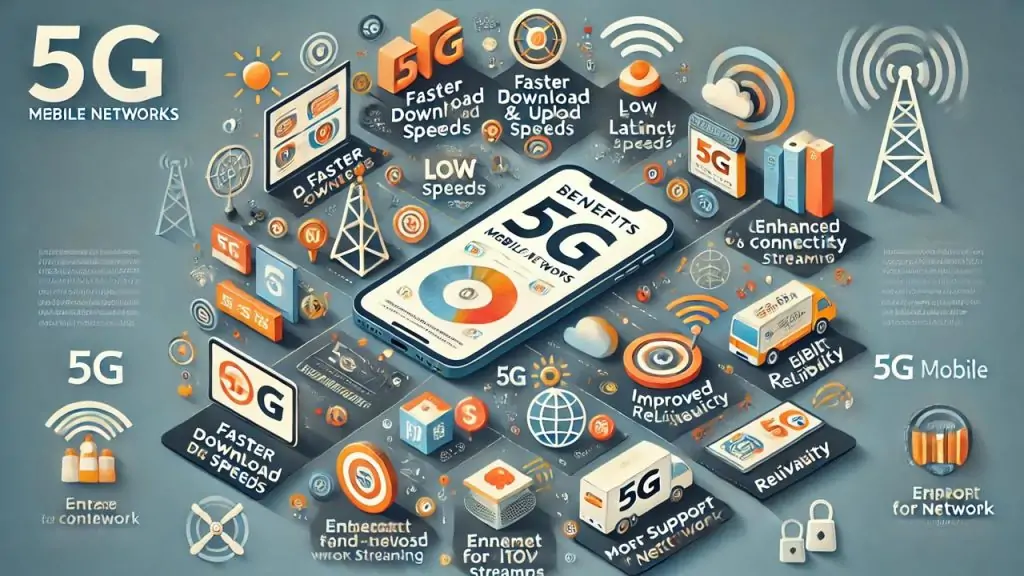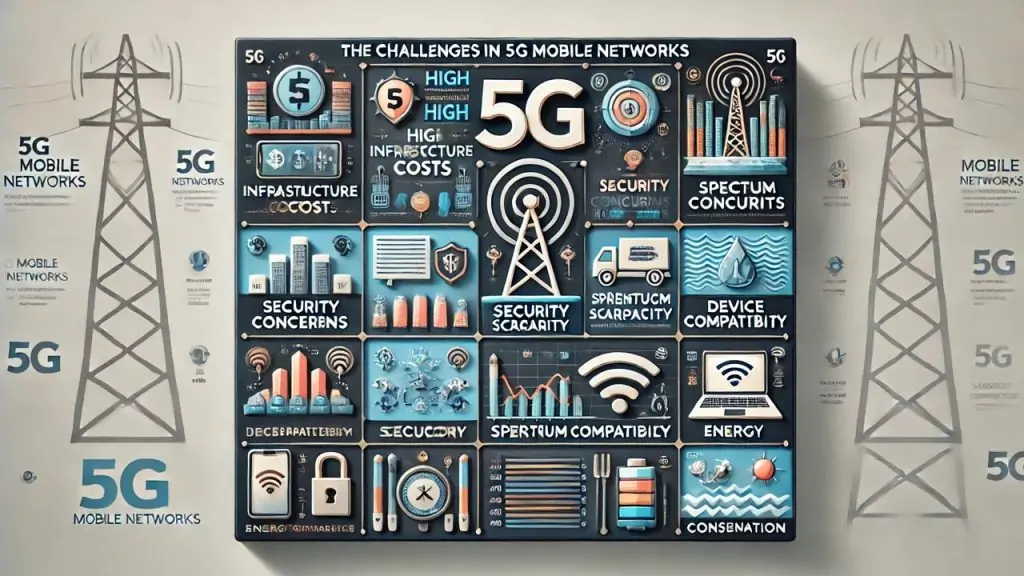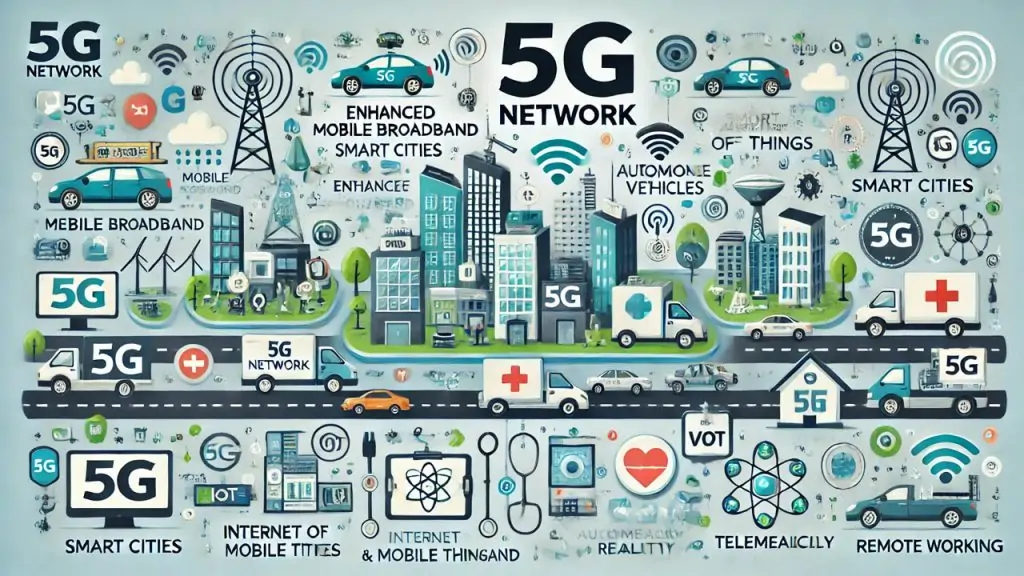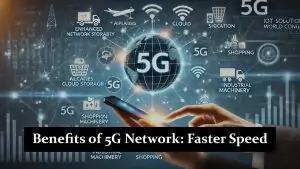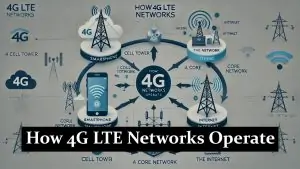The evolution of mobile networks has been remarkable, from the early days of 1G to the widespread adoption of 4G. Now, the world stands on the brink of a new technological revolution: 5G. 5G networks represent the fifth generation of mobile technology, succeeding 4G LTE, the standard for mobile connectivity since its deployment in the early 2010s. The rollout of 5G began globally in 2019, marking a significant milestone in telecommunications. Unlike its predecessors, 5G is an incremental improvement and a revolutionary leap designed to meet the demands of an increasingly connected world.
Key Technologies Behind 5G
- Millimeter Wave (mmWave)
- Frequency Range: 24 GHz to 100 GHz
- Benefits: Offers ultra-high speeds and low latency.
- Challenges: Limited range and penetration, requiring dense infrastructure with numerous small cells.
- Sub-6 GHz
- Frequency Range: Below 6 GHz
- Benefits: Better coverage and penetration compared to mmWave.
- Challenges: Lower speeds than mmWave but still significantly faster than 4G.
Key Features of 5G
- Ultra-fast speeds: 5G can achieve up to 100 times faster than 4G, enabling seamless streaming, rapid downloads, and smooth gaming experiences.
- Low latency: Latency is drastically reduced to around 1 millisecond, compared to 30-50 milliseconds in 4G networks. 5G supports real-time applications like autonomous driving and remote surgery.
- High capacity and connectivity: 5G can connect many devices simultaneously, making it ideal for the growing Internet of Things (IoT) ecosystem. Supports up to 1 million devices per square kilometre, compared to 100,000 devices in 4G.
- Enhanced reliability: Improved network stability ensures consistent performance even in densely populated areas.
Benefits of 5G Networks
The benefits of 5G extend beyond faster mobile internet. Here are some of the key advantages:
- Improved mobile broadband: 5G enhances everyday activities like video streaming, calls, and online gaming.
- Enhanced IoT capabilities: 5G enabled smarter homes, cities, and industries by supporting many connected devices.
- Better remote work and telemedicine: High-speed, reliable connections make remote work more efficient and telemedicine more accessible.
- Advanced applications: Innovations in automotive, healthcare, and manufacturing will benefit industries such as autonomous vehicles, remote diagnostics, and smart factories.
5G Infrastructure
The deployment of 5G requires a new network architecture. Key components include:
- Small cells: These are low-power base stations that provide coverage in small geographic areas, essential for high-frequency millimetre waves.
- Towers: Existing towers are being upgraded to support 5G, supplemented by new installations.
- Fibre optic cables: These provide the necessary backhaul to handle increased data traffic.
- Spectrum and frequency bands: 5G uses a variety of frequency bands, including low, mid, and high bands, to balance coverage and capacity.
Challenges in 5G Deployment
Despite its promise, 5G faces several challenges:
- Infrastructure costs: Building and upgrading the necessary infrastructure requires significant investment.
- Regulatory and policy issues: Governments and regulatory bodies must establish guidelines for spectrum allocation and network deployment.
- Security concerns: As with any new technology, 5G introduces potential risks that need to be addressed through robust security measures.
- Public health and environmental concerns: There are ongoing debates about the health effects of increased electromagnetic radiation and the environmental impact of widespread 5G infrastructure.
Global Deployment and Adoption
- North America: Major carriers like Verizon, AT&T, and T-Mobile have been at the forefront, with extensive 5G coverage in urban areas. By mid-2024, approximately 80% of the US population can access 5G.
- Europe: Countries like the UK, Germany, and Spain have rapidly expanded 5G infrastructure. The EU aims to have full 5G coverage in all urban areas by the end of 2025.
- Asia: South Korea, China, and Japan are leading in deployment and consumer adoption, with significant investments in infrastructure. China alone has over 500 million 5G users as of 2024.
Impact on Industries
- Internet of Things (IoT)
- Description: 5G facilitates the massive deployment of IoT devices, enabling smart homes, industrial automation, and healthcare monitoring.
- Statistics: By 2025, it’s estimated that there will be over 75 billion connected IoT devices.
- Autonomous Vehicles
- Description: Low latency and high reliability of 5G networks are crucial for real-time communication between autonomous vehicles and infrastructure.
- Statistics: The autonomous vehicle market is projected to reach $556 billion by 2026, driven by advancements in 5G technology.
- Smart Cities
- Description: 5G enables the integrating of various city services, from traffic management to energy distribution, creating more efficient and sustainable urban environments.
- Statistics: Global smart city spending is expected to reach $158 billion by 2024, with 5G playing a pivotal role.
Impact on Everyday Life
5G will significantly enhance everyday experiences:
- Enhanced user experiences: From seamless streaming and gaming to virtual reality, 5G will redefine digital entertainment.
- Smart cities and homes: 5G will enable more efficient urban management and smarter home automation systems.
- Communication and social interactions: Faster, more reliable connections will transform how we communicate and interact online.
Historical Context and Development
- Early Development: Research and development for 5G began in the early 2010s, with collaborations between major telecom companies and academic institutions.
- Standardization: The 3rd Generation Partnership Project (3GPP) released the first 5G standards (Release 15) set in December 2017, laying the groundwork for commercial deployment.
- Initial Deployments: In April 2019, South Korea was among the first countries to launch commercial 5G services, followed by the United States and several European nations.
Current Statistics and Achievements
- Global Users: As of June 2024, there are over 1.5 billion 5G users worldwide.
- Infrastructure: More than 2 million 5G base stations have been installed globally, with China leading the deployment.
- Economic Impact: The global 5G market is expected to generate $1.31 trillion in revenue by 2024.
Conclusion
5G networks are set to transform the way we live and work, driving innovation across various sectors and enabling new applications that were previously unimaginable. As deployment continues to expand globally, the full potential of 5G will gradually unfold, shaping the future of connectivity and digital interaction.
